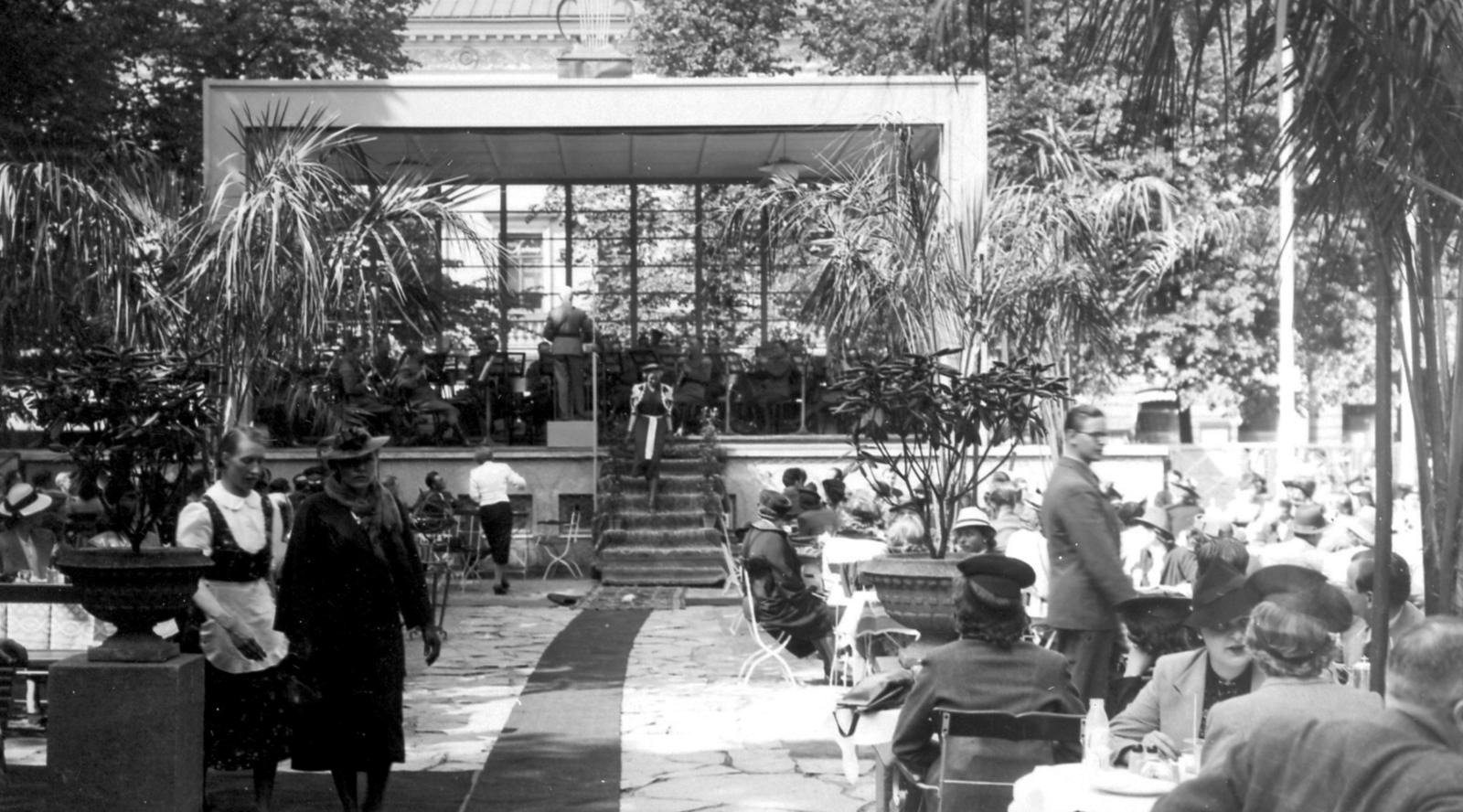KAPPELI FIRST OPENED TO THE PUBLIC IN 1867
KAPPELI FIRST OPENED TO THE PUBLIC IN 1867
The building was designed by architect Axel Hampus Dahlström as a café and restaurant. A refreshment kiosk built by confectioner Johan Daniel Jerngren previously stood on the site, and before that, a small milk stall run by a young shepherd.
According to legend, the name Kappeli, Finnish for “chapel”, originates from this time. Since the Latin for shepherd is “pastor”, the stall came to be known fondly as Kappeli (“the chapel”). Another theory behind the name is its location near the then new Helsinki Cathedral, hence the name Lilla Kapellet, “the little chapel”.

KAPPELI AND ART
The dining room walls are decorated with several paintings that artists have donated in exchange for free lunches. The most noted works include Albert Edelfelt’s “Gambrinus” on the kitchen wall, Oskar Kleineh’s “Streets of Rouen” and Hjalmar Munsterhjelm’s “Seascape”.
The large Helsinki mural in the cellar space is believed to have been painted by Henrik Erland Salonen. The work was discovered in the 1970s beneath five layers of wallpaper during the restaurant’s refurbishment.
BANDSTAND
Josef Wolontis (the restaurant owner 1883–1904) wanted to bring more life to Esplanadi park and built a bandstand opposite the restaurant to offer his customers musical entertainment. In 1887, a tall shell-shaped bandstand was erected, with Aleksei Apostol among the most famous directors conducting the orchestras.


ARTISTS’ MEETING PLACE
Kappeli’s famous patrons included composer Jean Sibelius, writer Juhani Aho, painter Akseli Gallen-Kallela and poet Eino Leino, whose favourite table still exists in the western wing. Composer Oskar Merikanto was also a frequent sight at the restaurant, while L. Onerva caused a scandal by sitting in the company of men without a male partner.
TIME FOR CHANGE
In 1919, Prohibition entered into force, and Kappeli became too expensive to keep open during the winter. The new owner Lundbom had the vision of relaunching the bandstand and the kitchen – and investing in high-quality dining. Kappeli’s lunches and dinners became an institution. Customers would also enjoy copious quantities of coffee and lemonade – as well as “laced” tea!
Elanto cooperative leased Kappeli in 1976 and started its long lease term with a complete restoration of the building and making it suitable for use around the year. In 2020, HOK-Elanto acquired the ownership of Kappeli and carried out a complete but sympathetic renovation of the building in 2021–2022, honouring the rich history and tradition of the “Jewel of Esplanadi”.


KAPPELI AND ART
The dining room walls are decorated with several paintings that artists have donated in exchange for free lunches. The most noted works include Albert Edelfelt’s “Gambrinus” on the kitchen wall, Oskar Kleineh’s “Streets of Rouen” and Hjalmar Munsterhjelm’s “Seascape”.
The large Helsinki mural in the cellar space is believed to have been painted by Henrik Erland Salonen. The work was discovered in the 1970s beneath five layers of wallpaper during the restaurant’s refurbishment.

BANDSTAND
Josef Wolontis (the restaurant owner 1883–1904) wanted to bring more life to Esplanadi park and built a bandstand opposite the restaurant to offer his customers musical entertainment. In 1887, a tall shell-shaped bandstand was erected, with Aleksei Apostol among the most famous directors conducting the orchestras.

ARTISTS’ MEETING PLACE
Kappeli’s famous patrons included composer Jean Sibelius, writer Juhani Aho, painter Akseli Gallen-Kallela and poet Eino Leino, whose favourite table still exists in the western wing. Composer Oskar Merikanto was also a frequent sight at the restaurant, while L. Onerva caused a scandal by sitting in the company of men without a male partner.

TIME FOR CHANGE
In 1919, Prohibition entered into force, and Kappeli became too expensive to keep open during the winter. The new owner Lundbom had the vision of relaunching the bandstand and the kitchen – and investing in high-quality dining. Kappeli’s lunches and dinners became an institution. Customers would also enjoy copious quantities of coffee and lemonade – as well as “laced” tea!
Elanto cooperative leased Kappeli in 1976 and started its long lease term with a complete restoration of the building and making it suitable for use around the year. In 2020, HOK-Elanto acquired the ownership of Kappeli and carried out a complete but sympathetic renovation of the building in 2021–2022, honouring the rich history and tradition of the “Jewel of Esplanadi”.
contact information
contact information
opening times
opening times
Sali aukeaa ma-pe klo 11 ja la-su klo 12
























